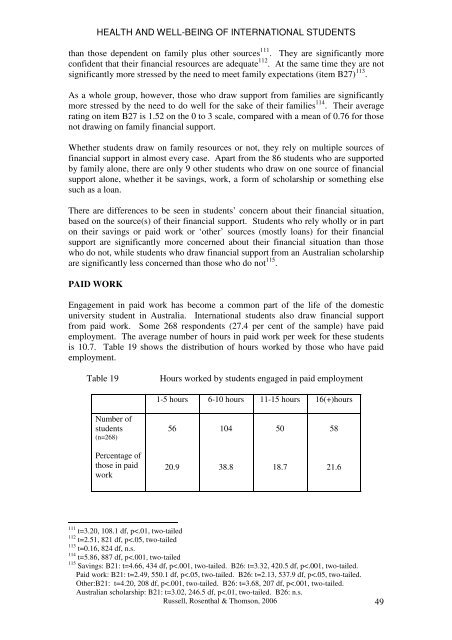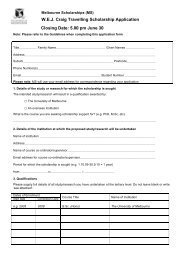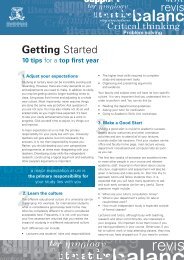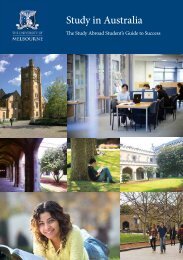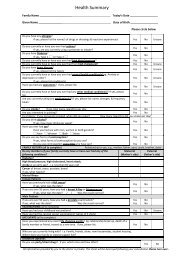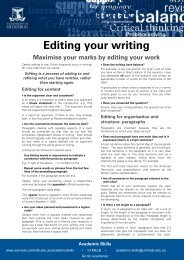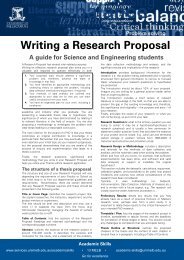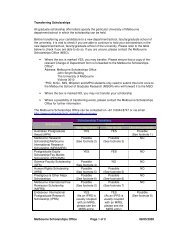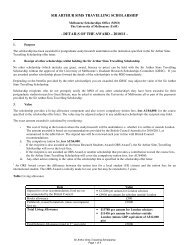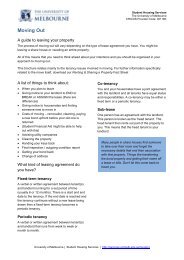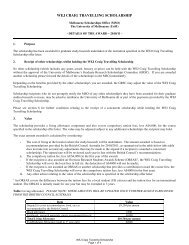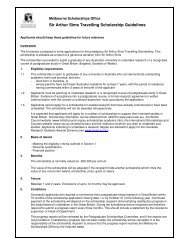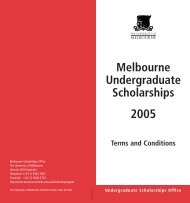a growing experience - Student Services - University of Melbourne
a growing experience - Student Services - University of Melbourne
a growing experience - Student Services - University of Melbourne
You also want an ePaper? Increase the reach of your titles
YUMPU automatically turns print PDFs into web optimized ePapers that Google loves.
HEALTH AND WELL-BEING OF INTERNATIONAL STUDENTSthan those dependent on family plus other sources 111 . They are significantly moreconfident that their financial resources are adequate 112 . At the same time they are notsignificantly more stressed by the need to meet family expectations (item B27) 113 .As a whole group, however, those who draw support from families are significantlymore stressed by the need to do well for the sake <strong>of</strong> their families 114 . Their averagerating on item B27 is 1.52 on the 0 to 3 scale, compared with a mean <strong>of</strong> 0.76 for thosenot drawing on family financial support.Whether students draw on family resources or not, they rely on multiple sources <strong>of</strong>financial support in almost every case. Apart from the 86 students who are supportedby family alone, there are only 9 other students who draw on one source <strong>of</strong> financialsupport alone, whether it be savings, work, a form <strong>of</strong> scholarship or something elsesuch as a loan.There are differences to be seen in students’ concern about their financial situation,based on the source(s) <strong>of</strong> their financial support. <strong>Student</strong>s who rely wholly or in parton their savings or paid work or ‘other’ sources (mostly loans) for their financialsupport are significantly more concerned about their financial situation than thosewho do not, while students who draw financial support from an Australian scholarshipare significantly less concerned than those who do not 115 .PAID WORKEngagement in paid work has become a common part <strong>of</strong> the life <strong>of</strong> the domesticuniversity student in Australia. International students also draw financial supportfrom paid work. Some 268 respondents (27.4 per cent <strong>of</strong> the sample) have paidemployment. The average number <strong>of</strong> hours in paid work per week for these studentsis 10.7. Table 19 shows the distribution <strong>of</strong> hours worked by those who have paidemployment.Table 19Hours worked by students engaged in paid employment1-5 hours 6-10 hours 11-15 hours 16(+)hoursNumber <strong>of</strong>students(n=268)561045058Percentage <strong>of</strong>those in paidwork20.938.818.721.6111 t=3.20, 108.1 df, p


